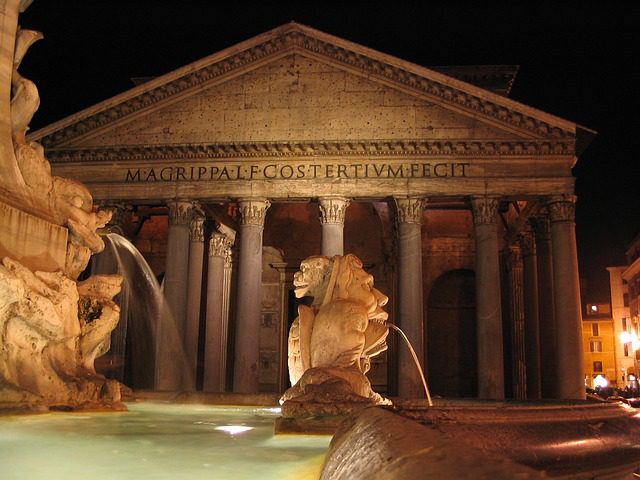The Pantheon is one of the most impressive and well-known monuments in Rome and one of the most iconic structures in the world. It has survived for almost two thousand years, making it one of the oldest structures still standing in the city. The Pantheon has a fact and rich history and has been the site of many significant events throughout the centuries. In this article, we will explore the fascinating history of the Pantheon, its architecture, and its place as one of the most popular attractions in Rome.
Table of Contents
History of the Pantheon
The Pantheon was originally built in 27 B.C. as a temple to all the gods (which is what the name “Pantheon” means). It was destroyed by fire in A.D. 80 and then rebuilt by Emperor Hadrian in A.D. 118-125. The Pantheon was designed by the architect Apollodorus of Damascus, who was also responsible for designing several other impressive structures in Rome.
The Pantheon was used as a temple for over 500 years until Christianity became the dominant religion in Rome in the 7th century. In A.D. 609, the Pantheon was consecrated as a church, and it has remained a church ever since. During the Middle Ages, the Pantheon was used as a tomb for many important figures, including the painter Raphael and several Italian kings.
The architecture of the Pantheon
The Pantheon is famous for its stunning architecture. The building is circular in shape and has a large dome on top. The dome is made of concrete and is one of the largest unsupported domes in the world. The diameter of the dome is 43.4 meters (142 feet), which is the same as the height of the building. The thickness of the dome decreases as it rises, making it lighter and less likely to collapse.
The interior of the Pantheon is just as impressive as the exterior. The walls are lined with marble, and the floor is made of ancient Roman bricks. There are several niches in the walls that would have held statues of the gods when the building was a temple. The oculus, or the circular opening in the center of the dome, is a unique feature of the Pantheon. It is 8.2 meters (27 feet) in diameter and lets in natural light, as well as rain and snow.
Rome Attraction: Visiting the Pantheon
The Pantheon is one of the most popular tourist attractions in Rome, and for a good reason. It is a stunning example of ancient Roman architecture and is one of the few buildings from that time period that is still standing. The Pantheon is also free to visit, making it accessible to everyone.
When visiting the Pantheon, there are several things to keep in mind. The first is that it is a church, so visitors should dress appropriately. This means no shorts, tank tops, or revealing clothing. The second thing to keep in mind is that the Pantheon is a popular tourist destination, so it can get crowded. The best time to visit is early in the morning or late in the evening when there are fewer tourists.
Guided Tour
Visitors to the Pantheon can take a guided tour or explore on their own. There is a lot to see and learn about, so a guided tour can be helpful for those who want to learn more about the history and architecture of the building. However, exploring on your own can be just as enjoyable and allows you to take your time and appreciate the beauty of the building.
One of the best things about visiting the Pantheon is that it is located in the heart of Rome, so there are plenty of other attractions nearby. The Piazza Navona, the Trevi Fountain, and the Spanish Steps are all within walking distance of the Pantheon. Visitors can easily spend a full day exploring the area and taking in the sights and sounds of Rome.
Cultural Significance
In addition to its historical and architectural significance, the Pantheon also has cultural significance. It has been featured in many works of art and literature, including Dan Brown’s “Angels and Demons” and the movie “Roman Holiday.” The Pantheon has also been the inspiration for many buildings around the world, including the U.S. Capitol building in Washington, D.C.
One of the unique features of the Pantheon is the way that the natural light enters the building through the oculus. The light changes throughout the day and creates a beautiful effect on the interior of the building. Visitors can watch as the light moves across the walls and floor, creating a constantly changing display.
The Pantheon is also a popular destination for those interested in history and archaeology. The building has been the site of many significant events throughout the centuries, and there is much to learn about the people and cultures that have influenced its history.
Conclusion
Overall, the Pantheon is a must-visit destination for anyone traveling to Rome. Its stunning architecture, rich history, and cultural significance make it one of the most popular attractions in the city. Whether you are a history buff, an architecture enthusiast, or simply someone looking for a beautiful place to explore, the Pantheon has something for everyone.
Featured Image by Erzsébet Apostol from Pixabay




